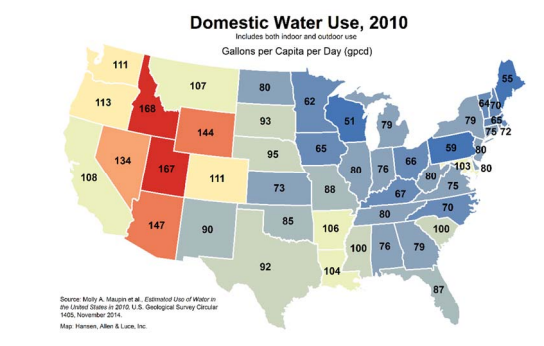
Utah’s statewide demand for water is expected to exceed the current supply in just 25 years because of the state’s rapidly increasing population, according to the projections of the Utah Division of Water Resources. The Utah State Natural Resources, Agriculture and Environment Interim Committee met May 18 to discuss the issue.
A new study by the Utah Foundation predicts Utah’s population will double from 3 million to 6 million people by the year 2050. If Utah continues to use the same amount of water per person as it does now, the projected water shortage may become a reality.
“Some believe the state can address its growing demand for water through conservation and by developing local supplies, including the conversion of agriculture water to municipal use,” states the Performance Audit of Projections of Utah’s Water Needs. “Others believe the state’s growing demand for water will require the development of major new sources of supply that will cost billions of dollars.”
According to a 2010 survey, Utah’s domestic water use is higher than any other state in the nation except Idaho. Utahns use 167 gallons of water per person per day, compared to Arizona, which uses 147, and Nevada, which uses 134. This domestic use only includes municipal water usage, but does not include water used for agricultural purposes.
More than 80 percent of Utah’s water usage is for agriculture. Some within the Natural Resources, Agriculture and Environment Interim Committee believe part of Utah’s water conservation plan should include appropriating a percentage of agricultural water to municipal and industrial use. They also believe a water conservation plan is overdue for the people of Utah.
Recently, the Division of Water Resources launched “H2Oath: Utah’s Water-Wise Pledge,” a water conservation initiative designed to aid the public in further water conservation.
The initiative seeks to include families, businesses and government agencies in a pledge to be more conscious of their water usage. A few recommendations for conserving water include fixing leaky pipes, reducing showers by one minute and running only full loads of laundry or dishes.
However, others within the committee believe water conservation is simply not enough.
“As we got into the report, it became crystal clear that while providing enough water for doubling our population is critically important, the issue of aging infrastructure was also a significant, if not more significant, challenge,” said Ron Thompson, General Manager of the Washington County Water Conservancy.
“I can tell you from my own experience,” he continued, “that none of them (the districts) have long-term repair and replacement systems as they move forward, so if they have a major failure, they’re scrambling to fund that city.”
Thompson said natural disasters, like the floods Utah has experienced in the past decade, could severely damage a city’s infrastructure if that infrastructure is not replaced or repaired in the coming years.
“To avoid future (municipal and industrial) water shortages, state and local water managers project that Utah will need to spend $33 billion over the next several decades to repair existing water systems and add additional supply,” states the Performance Audit of Projections of Utah’s Water Needs.
The Committee will continue to work with legislators and other committee members to develop a more extensive plan to help Utah prepare for those coming decades.




